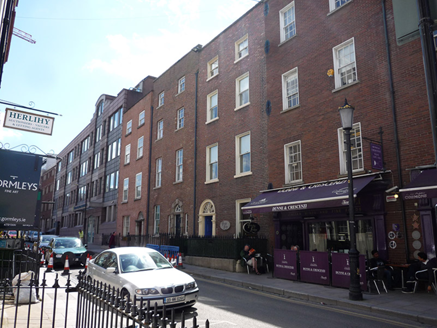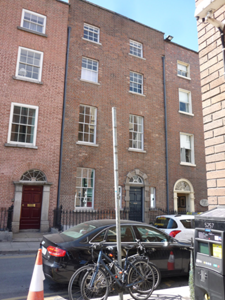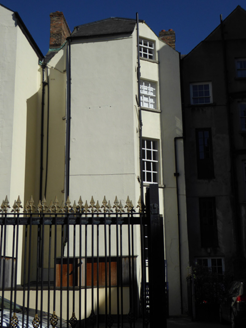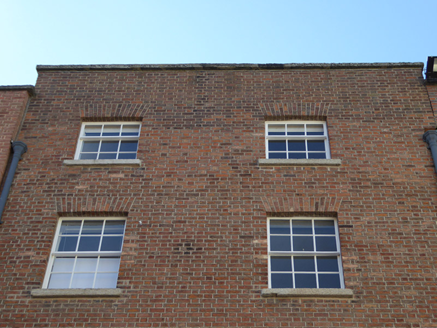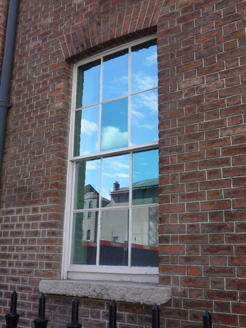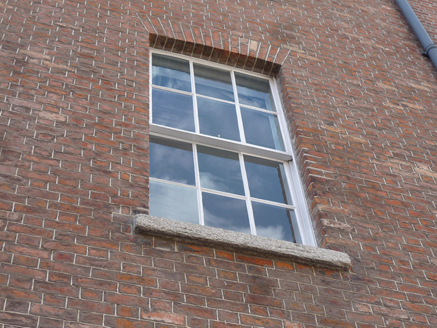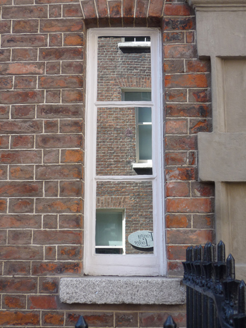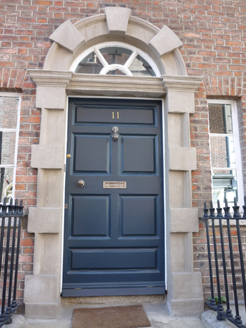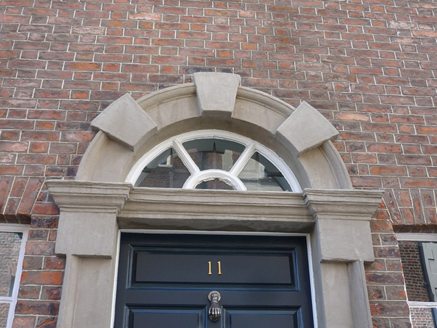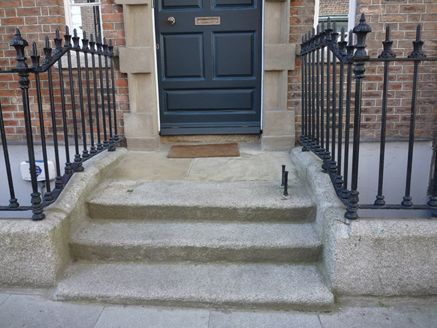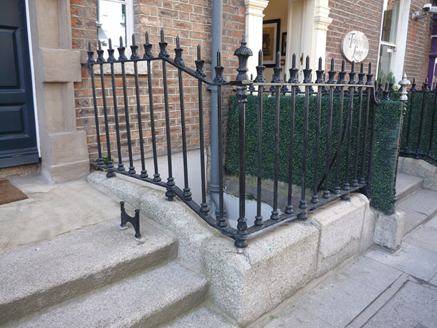Survey Data
Reg No
50100079
Rating
Regional
Categories of Special Interest
Architectural, Artistic
Original Use
House
In Use As
House
Date
1750 - 1830
Coordinates
316156, 233807
Date Recorded
11/07/2016
Date Updated
--/--/--
Description
Attached two-bay four-storey former house over basement, built c. 1755, modified c. 1810 and restored c. 1995 and having single-pitched four-storey closet return to middle of rear. Half-hipped slate roof on cruciform plan, running perpendicular to street, behind brick parapet with granite coping. Large rendered chimneystack to north of centre with clay pots, and slender brick chimneystack to south of centre. Concealed gutters, cast-iron hoppers and downpipes. Flemish bond tuck-pointed brown brick walling, reconstructed to top floor, and painted rendered basement having slate water-table. Square-headed window openings, diminishing in height to upper floors, with granite sills. Timber sliding sash windows, six-over-six pane to middle floors and basement and three-over-six pane to top floor, with wrought-iron bars to basement openings. Round-headed door opening with sandstone block-and-start surround, early spoked fanlight, moulded cornice and replacement six-panel raised-and-fielded timber door, flanked by three-pane timber-framed fixed sidelights. Granite entrance platform bridging basement, with three granite steps to street level and cast-iron boot-scrape. Basement area enclosed by cast-iron railings on chamfered granite plinth. Building abutted by houses of similar period and style.
Appraisal
South Frederick Street was laid out in the 1730s and largely complete by the 1750s. Constructed c. 1755, No. 11 was likely altered during the early part of the nineteenth century and, along with No. 10, was restored by Dublin Civic Trust about 1995. The well-balanced proportions of the façade, which is otherwise rather austere, are enlivened by a good sandstone block-and-start doorcase. It is complemented by the houses to each side of similar date and proportions. No. 11 makes an important contribution to the early character, variety and architectural quality of the street, this eastern stretch being fairly well preserved. Terminating the vista of Setanta Place, it, along with No. 10, serves an as example of the potential of early Dublin buildings to re-emerge from severe dereliction to viable reuse, in addition to their obvious architectural importance as an early building typology of the city.
